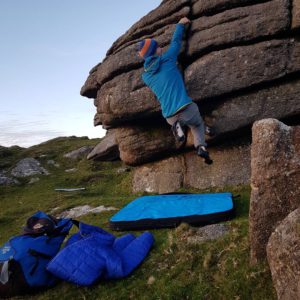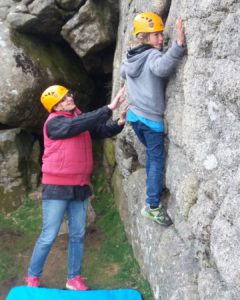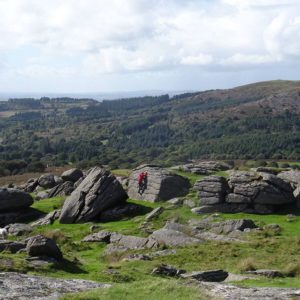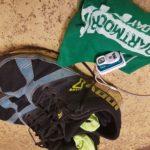Bouldering is the simplest form of rock climbing, it involves climbing on boulders and other rock formations, close to the ground, upwards or sideways (traversing) without use of ropes, harnesses and climbing gear. Bouldering is a creative activity, originally people bouldered to train for rock climbing and mountaineering, but is now done extensively as an activity in its own right. You don’t need any specialist equipment to get started and it’s great exercise. The Granite Trails team often go bouldering as a fun way to relax and stay climbing fit after work!
Where to go?
In the UK we have lots of amazing spots for bouldering. The Peak District, Lake district, Snowdonia and Dartmoor are great places to start. An amazing resource for finding your local spot or crag is the UKClimbing find a crag page. If you’re heading to Dartmoor or South Devon check out local activist Dave Henderson’s site Javu
The Climbers Club, Rockfax and many others produce guide books for all types of climbing around Britain, these have lots of essential info about the areas.
What do you need?
You don’t need anything to get started, except some snack, a flask and some warm clothes! Once you get into bouldering most climbers bring a pair of rock shoes, chalk bag and sometimes a crash pad also known as a bouldering mat. Connoisseurs will also bring an old bar towel to clean their shoes and an old toothbrush for cleaning chalk off holds.
How to stay safe
 Bouldering may take place close to the ground at a height which you can safely jump off, but that doesn’t make it completely safe, the floor is hard and usually covered in rocks. Here are some tips to stay safe.
Bouldering may take place close to the ground at a height which you can safely jump off, but that doesn’t make it completely safe, the floor is hard and usually covered in rocks. Here are some tips to stay safe.
Warm up first, the best way to do this is to start on really easy terrain that you can climb comfortably. A scramble around on the rocks is a great way to familiarise yourself with the crag, check the easiest ways down from boulders you plan to climb and get warmed up. Don’t go too hard too soon! Getting your muscles properly warmed up will help you climb you’re best and stay injury free.
What happens if you fall off, especially near the top? Firstly, stay within your limits until you’ve built up some experience of landings and jumping off.
Spotting is where you get a friend or another random boulderer to stand behind you and help control you’re landing, the spotter should use their hands to stop you from landing on you’re back or head, rolling off down the hill and guide you away from hazards. Good spotting takes practice and attentiveness (you can’t take photos or eat while spotting).
Many boulderers use a crash pad or bouldering mat, often alongside good spotting. They can be laid on the floor below the climber, leaned up against rocks or other hazards or even held by the spotter! The more pads and spotters the better if you’re trying something high or with a bad landing area. DMM make some great climbing gear – this pad is a great choice.
Don’t forget if you’re going alone, tell someone where you’re going and what time you’ll be back or check in by.
Grades
when you go bouldering, you can climb anything you want and making up new boulder problems and challenges is great fun! However many crags have routes and graded problems to try, you’ll find these in a climbing guide book for the relevant area. Most guide books use either the font grade (f) or the sherman grade (v) these will be explained in the book, the higher the number the harder it gets! The guide book will also tell you how to get to the crag and point out any good cafes and pubs nearby too.
Ethics
As climbers we have a responsibility to look after the environment we use for our sport, this helps to retain access to crags and benefits all users of the countryside. here are our top tips-
- Take home litter, including banana skins, orange peel and excess climbing chalk.
- keep the noise down, many people come to wild places to relax and enjoy nature, they don’t want to hear your “power screams” and don’t care if you climb best listening to drum and bass music!
- leave the rock as you find it, aggressive cleaning, removal of “loose” rock and chipping/changing of holds are all bad form.
- Park considerately and respect landowners. Just because its in a national park doesn’t automatically give us the right to climb there. If you don’t believe me then try going climbing at Vixen Tor! (don’t).
- Don’t use single use plastics (just don’t)
- Be sociable, chatting to other climbers can lead to some epic adventures or just a good spotter.
Hopefully you’re feeling inspired to get out there and have some fun, remember this article is no substitute for professional instruction and coaching and all climbing activities are undertaken at you’re own risk. Have fun!





